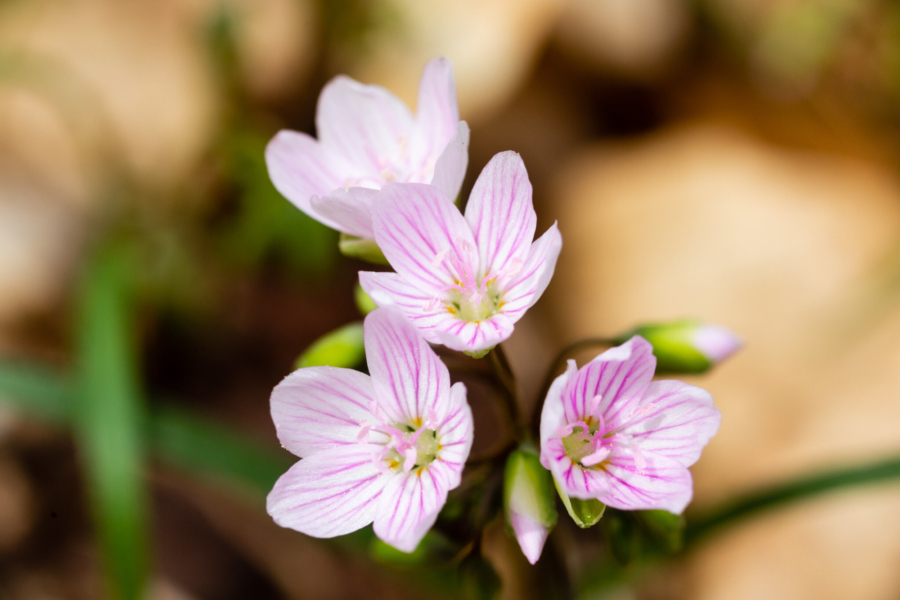This nectar filled ephemeral is one of the first signs of spring in the Chesapeake
The pink and white Virginia spring beauty lives up to its name as one of the first flowers of the season

The Virginia spring beauty (Claytonia virginica) is one of the first wildflowers to bloom in the Chesapeake region, and lives up to its name as an attractive flower, both to the human eye and to many species of pollinators.
A relatively small plant that begins to bloom in late February, the spring beauty typically grows 3-6 inches tall and consists of five white petals with fine pink stripes, often making it appear entirely pink from a distance.
The flower was named after one of Virginia’s earliest and best-known naturalists, John Clayton. Despite its name, the flower can be found throughout the Bay watershed, in addition to states as far west as Texas.
Although they certainly live up to the physical beauty that their name suggests, the spring beauty’s real attraction comes from the nectar that brings many pollinators to visit. The Virginia spring beauty produces a generous amount of nectar that attracts over 20 different species of native bees and insects. The pink lines on the flower petals serve as nectar lines for pollinators to follow, leading them to the five stamens with pink anthers and pink filaments. The filaments reflect an ultraviolet radiation which can be seen by insects and direct them to the generous nectary glands at the base of each petal. During overcast days and at night, the flower will close in order to protect the pollen inside.
While the Virginia spring beauty is tasty for pollinators, it has also been known to be a food source by Native Americans and continues to be eaten by wild food enthusiasts. Although the entire plant is edible, the corm is the most commonly eaten part, as it contains vitamins A and C, and can be eaten raw or prepared similarly to potatoes.
Virginia spring beauties are ephemeral plants, meaning they have a very short lifecycle. The plant takes advantage of the short window of early spring sunlight before the trees grow leaves and cast shade on forest floors, allowing them to complete most of their life cycle before the weather warms up. Because they bloom so early, spotting a spring beauty is one of the first sure signs of spring in the Chesapeake region. Its nectar also provides one of the first food sources for pollinators emerging from a dormant winter.
After cold and dark winters, the Virginia spring beauty is one of the first signs of color that is a joy to see by people and pollinators alike. To learn more about the Virginia spring beauty and other spring ephemerals in the Bay region, visit our field guide!

Comments
There are no comments.
Thank you!
Your comment has been received. Before it can be published, the comment will be reviewed by our team to ensure it adheres with our rules of engagement.
Back to recent stories